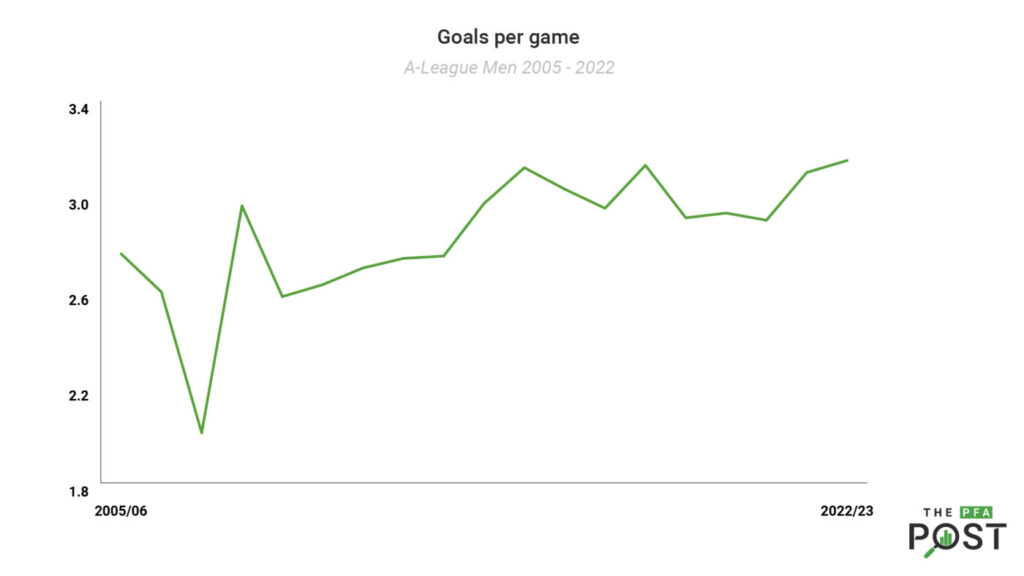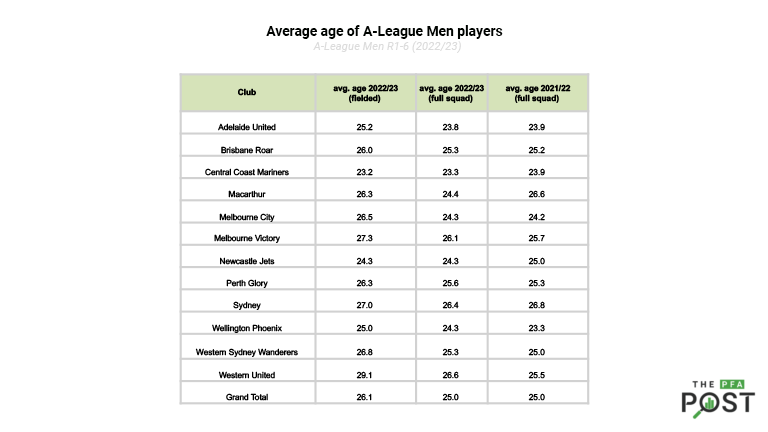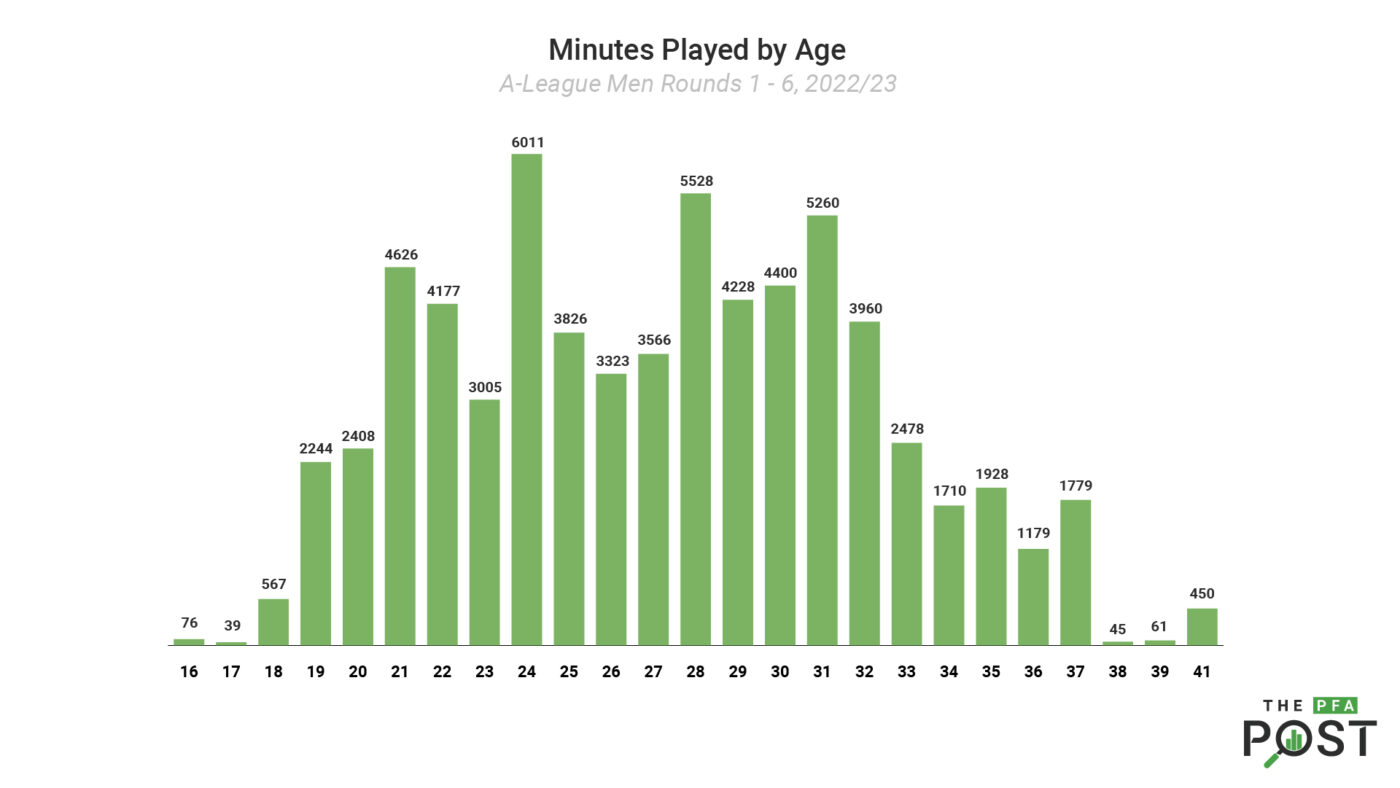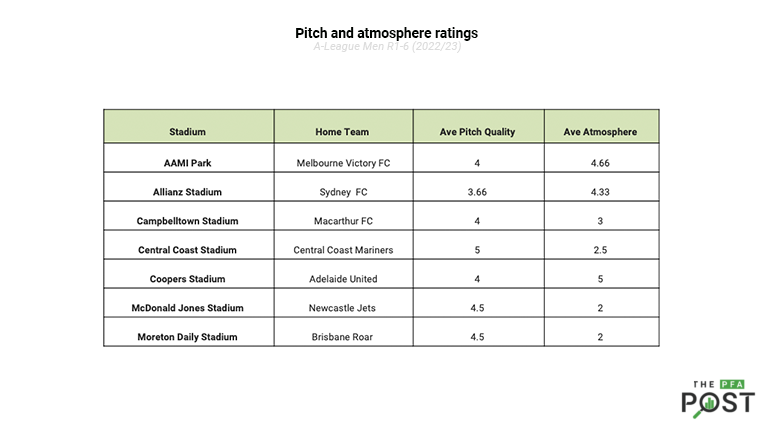With the A-League Men observing a break for the 2022 FIFA World Cup in Qatar as the Socceroos compete in Group D of the tournament, the PFA has analysed some of the emerging trends from the first six rounds of the domestic season so far.
⚽ A-League Men on track for highest scoring season on record?
This season could be one of the highest-scoring seasons in competition history if the scoring trends of the first six rounds continue for the remainder of the season.
With 107 goals scored in 34 matches – at a rate of 3.15 per match – the A-League ranks as one of the highest scoring leagues against global comparators, behind only the German Bundesliga (3.19), prior to the FIFA World Cup Qatar break.
America’s MLS (2.96), France’s Ligue 1 (2.96), England’s Premier League (2.87), Italy’s Serie A (2.58), Spain’s La Liga (2.54) and Japan’s J-League (2.51), rank behind the A-League Men in terms of GPG.
Goals Per Game (GPG) – A-League Men vs. Global Leagues

*Seasons recently concluded. All other leagues are observing a break for the FIFA World Cup 2022 until recommencing in December 2022
Over the course of the remaining fixtures, that figure may well level out.
However, if it continues at the current rate – or increases – it will surpass the highest GPG season recorded in 2015/16.
Free-scoring Melbourne City FC finished that campaign with the highest goal tally, with 63 goals in 27 games (2.3 GPG), while the overall league GPG average was 3.12 for that season.

In the PFA’s Annual A-League Men report, through both a technical analysis and player feedback, the PFA attempted to define the competition’s playing style, with a transitional game reflected via the anecdotal assessment and data.
Open, high-scoring and unpredictable matches indicate that transitional style is prevalent again this season.
📉 Age profile consistent with previous campaigns
In terms of the opportunity for emerging players, 77 players under the age of 23 have made appearances during the first six rounds. That represents 32% of the 238 players to have received an appearance so far this season.
Perth Glory (11) and Central Coast Mariners (10) have provided the highest number of U23 players with appearances, followed by Adelaide United (9) and Newcastle Jets (8).
The Mariners have the lowest average age of players fielded this campaign, with an average age of just 23.2. Teenagers such as Garang Kuol (18), Nectarios Triantis (19), Jacob Farrell (19) and a handful of young players in their early 20s drive the average age of Nick Montgomery’s squad down in comparison to their opponents.
The next average youngest team, in terms of appearances, is Wellington Phoenix (25) followed by Adelaide United (25.2). The oldest is Western United, with an average age of fielded players at 29.1.
The A-League Men average age of fielded teams is 26.1.

When you drill down into the match minutes played by various age groups, the data illustrate that there is a healthy spread of minutes available to players U23.
Players aged 24 are the group that currently occupies the largest amount of match minutes, with a cumulative amount of 6011 total minutes played by that cohort.
Players aged between 16 and 24 have played 23,153 of a total 67,320 (34%) minutes.
The top five age groups with the most match minutes are 24 (6011), 28 (5528), 31 (5260), 21 (4626) and 30 (4400), indicating a relatively even spread of match minutes across emerging and experienced players.

🏟️ Central Coast Stadium and Coopers Stadium lead pitch ratings
Across the first six rounds, the PFA measured pitch quality and atmosphere, via post-match surveys conducted by players.
Although it hosted just one fixture, Coopers Stadium received the second highest pitch quality (4 out of 5) and highest atmosphere rating (5 out of 5), for the Round 6 match between Adelaide United and Melbourne Victory.
Central Coast Stadium ranked highest with 5/5 for pitch quality, followed both McDonald Jones Stadium (4.5/5) and Moreton Daily Stadium (4.5/5) which received high pitch quality ratings, although were rated as having lower than average atmosphere.

Please note that these ratings are objective and based on player feedback and experiences.
About the PFA Post
In line with the PFA’s commitment to providing policy leadership to ensure Australian football is the best governed football nation in the world, is internationally competitive on and off the field and is a central part of Australian culture, ‘The PFA Post’ analyses issues impacting Australian football.







